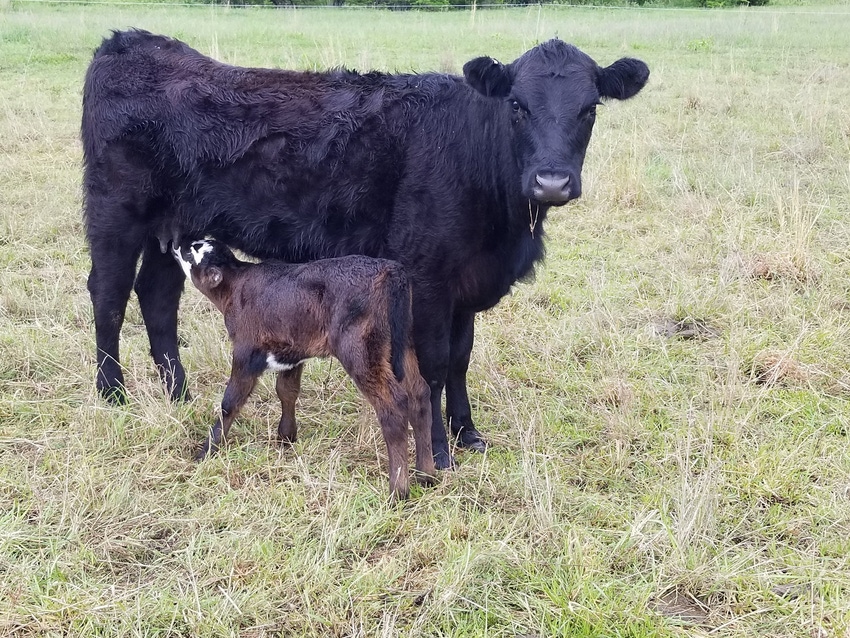March 17, 2020

There’s no question a lot of calves hit the ground in April, and after waiting nine months and then sometimes staying up through the night to check these calves to ensure a successful birth, the last thing we want to see is the calf die from a disease.
Between Clostridium perfringens, coccidiosis, navel ill, pneumonia and general scours, many maladies can befall a neonatal calf. Concerned about these challenges, cattle producers often ask me, “Jake, what do you give your calves to prevent all this?” My answer typically surprises.
“Nothing,” is how I respond. Sometimes it takes a follow-up question or two to clarify that by nothing I mean no shots at all. The calves get an ear tag and the bulls get castrated. The ear tag keeps us from checking the same calf three times to make sure we got him cut.
Getting away with doing nothing isn’t some sort of a voodoo miracle, but rather a product of calving in a clean environment. No, I don’t mean a spotless hospital room, but a pasture that has not been contaminated with manure for several months. Just like the whitetail deer that do fine every spring, calves can thrive without treatments at birth if their environment is clean.
Confine the problem
Understanding a clean environment starts by understanding the sources of infection. The adult cow is the reservoir for many of our calf diseases. Her feces contains the bugs we want to keep away from our calves, although at a lower amount. In an environment where it is easy for cow feces to cling to the cow’s udder, her calf ingests the bugs during nursing. If the environment also allows water to pool and mix with manure (like most muddy calving pens), calves also contact these bugs when drinking in these stagnant puddles.
When those bugs enter these first-born calves, because they are in a new host, they multiple rapidly. These calves pass the large loads of bugs into the environment through manure, which also ends up on the udders of cows and the muddy puddles. That means newer calves are subject to larger and larger loads of disease-causing bugs, making them more apt to succumb to the disease.
How do we stop this cycle? By keeping the cow’s udders clean and minimizing contact with manure-laced puddles. The gold standard, a technique known as the Sandhills Calving System, solves this problem by moving pregnant cows away from the pairs every two weeks. Then once all cows have calved and the calves are a month old, the groups are brought together.
However, many of these problems can be decreased or eliminated by moving your calving location or season to a cleaner one. March in the Midwest is a wet, chilly time of year. We often feel like we need to keep cows close by so we can assist with a difficult calving. But in this age of calving ease bulls, is our greatest risk a calving problem, or neonatal health?
What time of year?
In any situation, calving on grass is superior to calving in a pen. If this is not an option, then moving the time of year for calving is the next-best step. The dead of winter has many challenges, but frozen ground and freezing manure trap bacteria, viruses and parasites better than damp, sloppy pens.
A person can move to late spring and calve out on pasture. While some may be hesitant due to a lack of calving facilities or even the ability to watch their cows closely on pasture, if you have significantly more neonatal health problems than calves to pull, this fear may be misplaced. It makes little sense to save a calf with a leg back to lose three to scours in a muddy pen.
For people at a certain latitude in the Midwest, fall calving may be the best option. The weather is warm in the late summer and/or early fall and the ground is dry. Pasture is at a premium, but corn stalks are plentiful. This means a lactating cow is grazing the less expensive corn stalks, while more gestating cows can be run on the limited pasture. Also, these calves will hit a nice niche in the market next spring.
Like many things in the cow business, there is more than one right way of doing things. However, if more than 5% of your calves get sick within a few weeks of calving, something needs to change. While various medications exist, consider moving your calving season or location to a more conducive option. Unlike medicines, this change will never go up in price or run out of inventory.
The opinions of the author are not necessarily those of Beef Producer or Farm Progress.
You May Also Like




